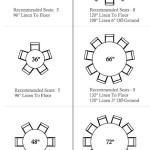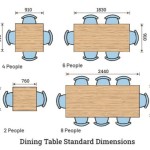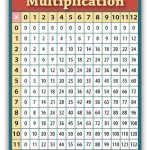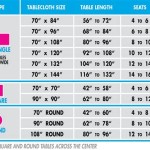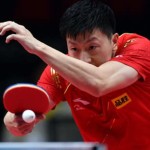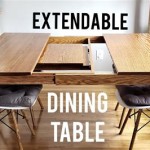How Much Is a Used Slate Pool Table Worth?
Determining the value of a used slate pool table involves assessing numerous factors. Unlike some commodities with readily available price guides, used pool tables are influenced by specifics such as brand, condition, age, slate thickness, and the presence of accessories. Understanding these variables is crucial for both buyers and sellers aiming to arrive at a fair price.
The primary component influencing the value is the slate itself. Slate provides the smooth, level, and stable playing surface essential for accurate gameplay. Pool tables without slate, often referred to as "wood bed" tables, are generally considered toys or furniture pieces, offering significantly lower performance and resale value compared to those with slate.
Beyond the presence of slate, the condition of the various components plays a significant role. The felt, rails, pockets, and frame all contribute to the overall functionality and aesthetic appeal, impacting the potential resale value of the table. A meticulous assessment of each element is essential before establishing a price.
Brand and Model Recognition: Establishing a Baseline Value
The brand and model of a pool table serve as an initial indicator of its potential value. Certain manufacturers have established reputations for superior craftsmanship and durability, commanding higher resale prices compared to lesser-known or mass-produced brands. Identifying the brand is often the first step in determining a baseline value.
Brunswick, Olhausen, and Diamond are examples of brands known for producing high-quality pool tables. These manufacturers often use premium materials and employ rigorous construction methods, resulting in tables that hold their value over time. Identifying a table as belonging to one of these brands immediately places it in a higher price bracket compared to generic or no-name alternatives.
The specific model within a brand's lineup also matters. Some models are considered flagship products, representing the pinnacle of the manufacturer's design and engineering capabilities. These models are often highly sought after in the used market, attracting premium prices. Limited edition or discontinued models can also increase value due to their relative rarity.
Researching the original MSRP (Manufacturer's Suggested Retail Price) of the table helps contextualize its current market value. While depreciation is inevitable, knowing the original price provides a starting point for assessing the table's condition and factoring in wear and tear. Online resources, including manufacturer websites, pool table forums, and auction archives, can be valuable for obtaining this information.
However, brand recognition alone is not sufficient to determine value. A poorly maintained Brunswick table will be worth less than a well-cared-for table from a lesser-known manufacturer. The condition of the table, which will be discussed later, is a crucial factor that can significantly alter the initial value established by the brand and model.
Condition Assessment: Identifying Damage and Wear
A thorough assessment of the table's condition is paramount in determining its value. This involves inspecting each component for signs of damage, wear, and tear. The felt, rails, pockets, frame, and legs should all be carefully scrutinized.
The felt is the most vulnerable part of the table and is subject to considerable wear. Tears, stains, and excessive pilling are all indicators of damage that can significantly reduce the table's value. The cost of refelting a pool table can range from several hundred to over a thousand dollars, depending on the quality of the felt and the complexity of the installation. This cost should be factored into the overall price of the table.
The rails, which surround the playing surface, should be firm and responsive. The rubber cushions on the rails should provide consistent rebound. Hardened or cracked cushions will negatively affect gameplay and require replacement. The condition of the rail facings, the decorative material covering the rails, should also be evaluated.
The pockets should be intact and securely attached to the table. Tears or loose connections will require repair or replacement. The type of pocket (leather, rubber, or plastic) can also influence the table's value, with leather pockets generally being preferred for their durability and aesthetic appeal.
The frame and legs provide the structural support for the table. Inspecting these components for signs of warping, cracks, or water damage is crucial. A warped frame can affect the levelness of the playing surface, rendering the table unusable. Water damage can lead to rot and structural weakness. The stability of the legs should also be checked to ensure the table is level and balanced.
The condition of the slate itself is difficult to assess without specialized equipment. However, visual inspection can reveal cracks or chips along the edges. Any visible damage to the slate is a serious concern and can significantly reduce the table's value. Professional inspection by a qualified pool table technician is recommended if there is any doubt about the condition of the slate.
Documenting any damage or wear with photographs is helpful in negotiating the price. Transparency about the table's condition builds trust between the buyer and seller and facilitates a fair transaction.
Slate Thickness and Construction: Impacting Playability and Longevity
The slate is the heart of a pool table, providing the flat and stable playing surface essential for accurate ball roll. The thickness and construction of the slate directly impact the table's playability and longevity, and therefore, its value.
Most high-quality pool tables use slate that is either 1 inch or 1.25 inches thick. Thicker slate provides a more stable and level playing surface, resulting in improved gameplay. While thinner slate (such as 0.75 inches) is sometimes found in less expensive tables, it is generally less desirable due to its increased susceptibility to warping and vibration.
The number of slate pieces also affects the table's value. Most regulation-size pool tables use a three-piece slate design. This configuration allows for easier transportation and installation while still providing a stable playing surface. Single-piece slate tables, while offering the ultimate in stability, are extremely heavy and difficult to move, making them less practical for most buyers.
The seams between the slate pieces should be smooth and virtually imperceptible. Poorly filled seams can create imperfections on the playing surface, affecting ball roll and detracting from the table's overall playability. Professional installation and leveling are crucial for ensuring smooth seams.
The frame of the pool table should be securely attached to the slate. The method of attachment can vary, but the goal is to provide a rigid connection that prevents the slate from shifting or vibrating. A poorly attached slate can lead to unevenness and inconsistent ball roll. The frame should be sturdy enough to support the weight of the slate without sagging or warping.
Inspecting the underside of the table can reveal information about the slate's construction and the frame's attachment. Look for signs of robust construction and solid materials. Ask the seller about the slate's thickness and whether it is certified by a reputable organization. Verify this information if possible to ensure accuracy. The overall weight of the table is also a good indicator of the slate's thickness; heavier tables generally have thicker slate.
In summary, thicker slate, a three-piece design, smooth seams, and a robust frame attachment all contribute to a higher-quality pool table and a correspondingly higher resale value. Buyers should carefully assess these factors when evaluating a used pool table.
Ultimately, determining the value of a used slate pool table requires careful consideration of multiple factors. By assessing the brand and model, thoroughly evaluating the condition, and understanding the significance of slate thickness and construction, both buyers and sellers can make informed decisions and arrive at a fair price. Local market conditions and the availability of similar tables will also play a role in the final negotiation.

Old Fischer Pool Table Info

How Much Does A Pool Table Cost

Value Of A 1968 Gandy 8 Ft Pool Table

Used Pool Tables Ultimate Guide 2024

How Much Is A Gandy Pool Table Worth

Brunswick Bristol Vintage 8 Foot Pool Table For

Used 8 Kasson Pool Table For

Used Pool Tables For Virginia Donovan Billiards

Used Pool Tables For Los Angeles Orange County Ventura Riverside Table

8ft Used Amf Savanna D L Billiards
Related Posts

